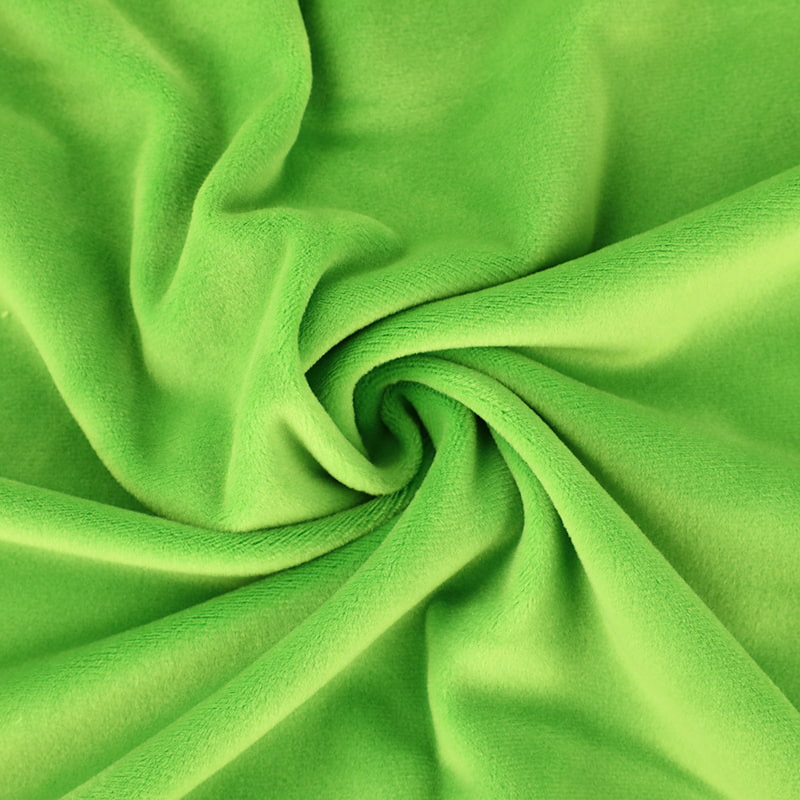How does the production of spandex super soft fabric impact the environment compared to other synthetic fabrics?
The production of spandex super soft fabric has both unique and shared environmental impacts compared to other synthetic fabrics like polyester, nylon, and acrylic. Understanding these impacts requires examining various stages of the production process, including raw material extraction, manufacturing, use, and end-of-life disposal. Here’s a detailed analysis:
1. Raw Material Extraction and Processing
Petroleum-Based Production:
Spandex: Spandex, also known as elastane, is a synthetic polymer made from polyurethane. Its production begins with petrochemical processes, which involve significant energy use and emissions.
Comparison with Other Synthetics: Polyester, nylon, and acrylic are also derived from petroleum. The extraction and processing of crude oil for these fabrics are energy-intensive and generate greenhouse gases (GHGs) and pollutants.
Environmental Impact:
GHG Emissions: The extraction of raw materials for spandex and other synthetic fabrics contributes to GHG emissions, which are a major driver of climate change.
Resource Depletion: All synthetic fabrics deplete non-renewable resources, contributing to long-term environmental concerns.
2. Manufacturing Process
Energy Use:
Spandex Production: Producing spandex involves complex chemical reactions and requires substantial energy, mainly from non-renewable sources. The process includes polymerization, extrusion, and spinning into fibers.
Comparison with Other Synthetics: Polyester and nylon manufacturing are also energy-intensive but spandex production generally requires more energy due to its complex chemical synthesis.
Chemical Use:
Toxic Chemicals: Spandex production uses various chemicals, including solvents and stabilizers, which can be toxic and harmful to the environment if not managed properly.
Comparison with Other Synthetics: Nylon production involves the use of strong acids and other chemicals that pose environmental risks. Polyester manufacturing also uses hazardous chemicals like antimony oxide as a catalyst.
Water Consumption and Pollution:
Spandex: The production of spandex is relatively low in water usage compared to fabrics like cotton. However, it does produce wastewater that can be contaminated with chemicals.
Comparison with Other Synthetics: Polyester and nylon also generate wastewater, which can be challenging to treat due to the presence of dyes and chemicals.

3. Environmental Pollutants
Air Pollution:
Volatile Organic Compounds (VOCs): The production of spandex can release VOCs, which contribute to air pollution and can have adverse health effects.
Comparison with Other Synthetics: Polyester production also emits VOCs and other pollutants. Nylon production releases nitrous oxide, a potent greenhouse gas.
Water Pollution:
Chemical Runoff: Improper disposal of wastewater from spandex production can lead to chemical runoff into water bodies, affecting aquatic ecosystems.
Comparison with Other Synthetics: Polyester and nylon can also cause significant water pollution if wastewater treatment is inadequate.
4. Product Use and Maintenance
Microfiber Pollution:
Spandex: Washing garments made from spandex can release microfibers into water systems, contributing to microplastic pollution.
Comparison with Other Synthetics: Polyester and nylon also shed microfibers, which are a major environmental concern due to their persistence and accumulation in marine environments.
Durability and Longevity:
Spandex: Spandex fabrics are known for their elasticity and comfort but may degrade faster than other synthetics, leading to more frequent replacement.
Comparison with Other Synthetics: Polyester and nylon are more durable and resistant to wear, potentially reducing the frequency of replacement and associated environmental impact.
The production of spandex super soft fabric impacts the environment in ways that are broadly similar to other synthetic fabrics, involving high energy consumption, chemical use, and contributions to pollution and waste. However, the specific characteristics of spandex production, such as its energy-intensive processes and challenges with recyclability, can make its environmental footprint distinct. Sustainable alternatives and improved manufacturing practices are critical to reducing the environmental impact of spandex and other synthetic fabrics.

Huzhou Colorful Textile Co., Ltd.
Huzhou Colorful Textile Co., Ltd. is located in Zhili Town High-tech Industrial Park, China's children's wear city. The main production and sales of plush warp-knitted products: for children's clothing spandex super soft and ollie velvet products, compared with the market has obvious cost performance. Due to the reduction of layers of intermediate links, completely control the price advantage. The company has superior geographical location, strict internal management, stable quality (with export orders of professional technical team), hot pillow service, the preferred supplier for garment enterprises cooperation.
More About Us

 English
English русский
русский Español
Español عربى
عربى







